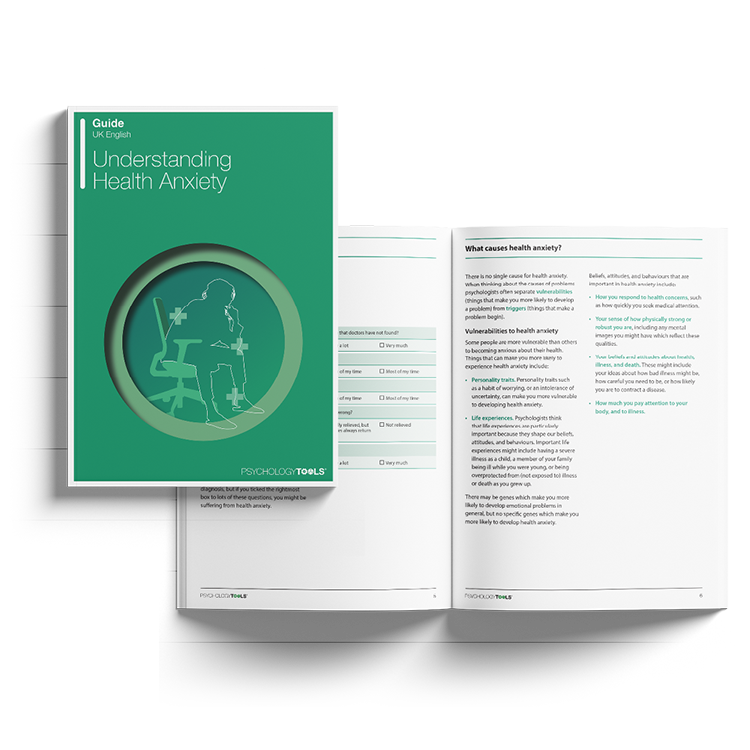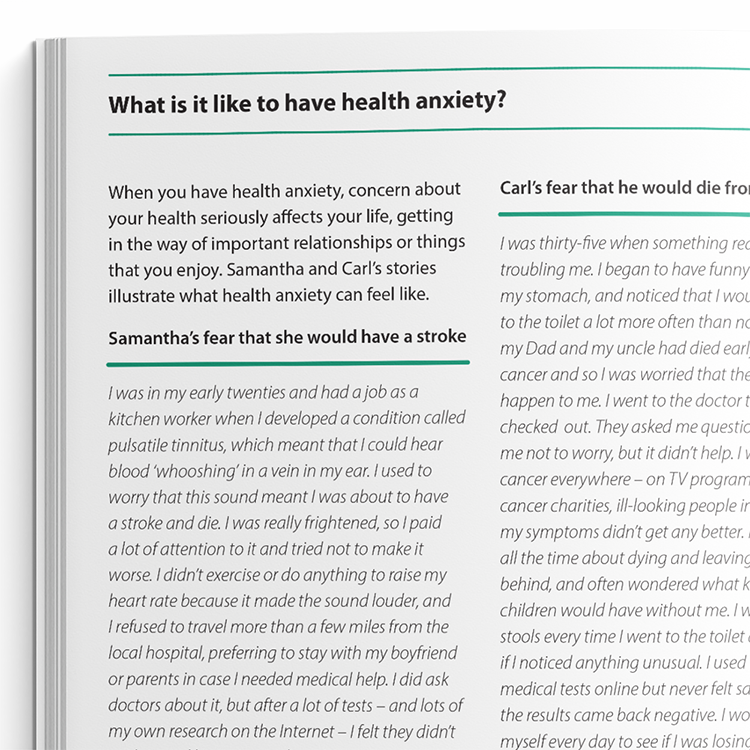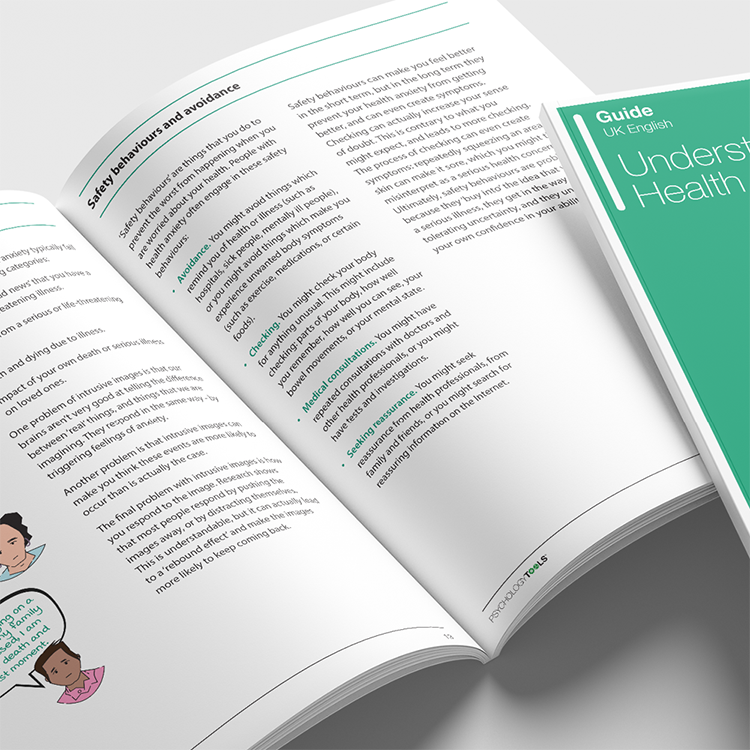Guide (PDF)
A psychoeducational guide. Typically containing elements of skills development.
An accessible and informative guide to understanding health anxiety, written specifically for clients.

A psychoeducational guide. Typically containing elements of skills development.
To use this feature you must be signed in to an active account on the Advanced or Complete plans.

Our ‘Understanding…’ series is a collection of psychoeducation guides for common mental health conditions. Friendly and explanatory, they are comprehensive sources of information for your clients. Concepts are explained in an easily digestible way, with plenty of case examples and accessible diagrams. Understanding Health Anxiety is designed to help clients with health anxiety to understand more about their condition.
This guide aims to help clients learn more about health anxiety. It explains what health anxiety is, what the common symptoms are, and effective ways to address it, such as cognitive behavioral therapy (CBT).
Designed to help clients understand and learn more about health anxiety.
Identify clients who may be experiencing health anxiety.
Provide the guide to clients who could benefit from it.
Use the content to inform clients about health anxiety and help normalize their experiences.
Discuss the client’s personal experience with health anxiety.
Plan treatment with the client or direct them to other sources of help and support.
Some concern about health is normal - and even beneficial - as it can promote self-care and help-seeking. However, when worries about health become excessive, persistent, and distressing, they may indicate health anxiety. In such cases, health-related concerns can dominate an individuals' thoughts, interfere with daily functioning, and lead to significant emotional distress. Prevalence estimates suggest that between 1% and 10% of individuals experience health anxiety each year.
Cognitive behavioral therapy (CBT) and acceptance and commitment therapy (ACT) are both evidence-based psychological treatments for health anxiety. The Understanding Health Anxiety guide is designed to support clients in making sense of their condition. It provides a clear overview of symptoms and treatments, and also outlines key maintenance processes associated with health anxiety, including interpreting bodily sensations or health-related triggers as threatening, hypervigilance, and intrusive images related to illness or death.

Just enter your name and email address, and we'll send you Understanding Health Anxiety (English US) straight to your inbox. You'll also receive occasional product update emails wth evidence-based tools, clinical resources, and the latest psychological research.
Working...
This site uses strictly necessary cookies to function. We do not use cookies for analytics, marketing, or tracking purposes. By clicking “OK”, you agree to the use of these essential cookies. Read our Cookie Policy